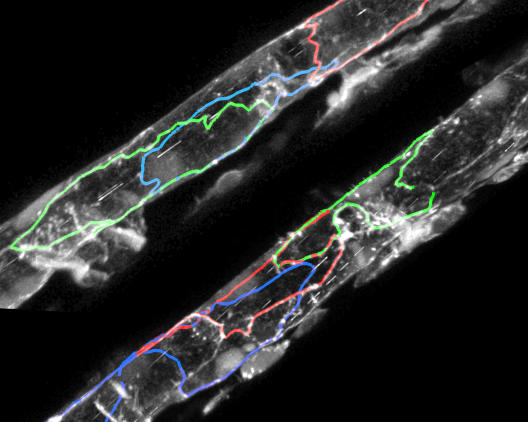Genetic defect causes vessel malformations

Researchers at the Cells-in-Motion Cluster of Excellence at the University of Münster have been examining zebra fish to see how blood pressure and shear stress regulate the correct size of blood vessels. In the process, the team, led by Dr. Arndt Siekmann from the Max Planck Institute for Molecular Biomedicine, has identified a gene which in humans can lead to Osler-Weber-Rendu, a pathological widening of the blood vessels.
The researchers have demonstrated that enlarged endothelial cells in blood vessels can give rise to malformations in the vascular network, because they cannot react to the incipient blood flow during embryonic development by correctly altering their shape. In order to test the function of the deformed vessels, the team led by Prof. Cornelia Denz from the Institute of Applied Physics carried out measurements of the blood flow. The researchers jointly developed a new model that elucidates the role of correct endothelial cell shape and size in blood vessel development and in the emergence of vessel malformations. The study has been published in the journal “Nature Cell Biology”.
Original publication:
Sugden, WW; Meissner, R; Aegerter-Wilmsen, T; Tsaryk, R; Leonard, EV; Bussmann, J; Hamm, MJ; Herzog, W; Jin, Y; Jakobsson, L; Denz, C and Siekmann, AF. Endoglin controls blood vessel diameter through endothelial cell shape changes
in response to haemodynamic cues. Nature Cell Biology, DOI: 10.1038/ncb3528 Abstract
- The detailed story (Press release of the Max Planck Institute for Molecular Biomedicine)

